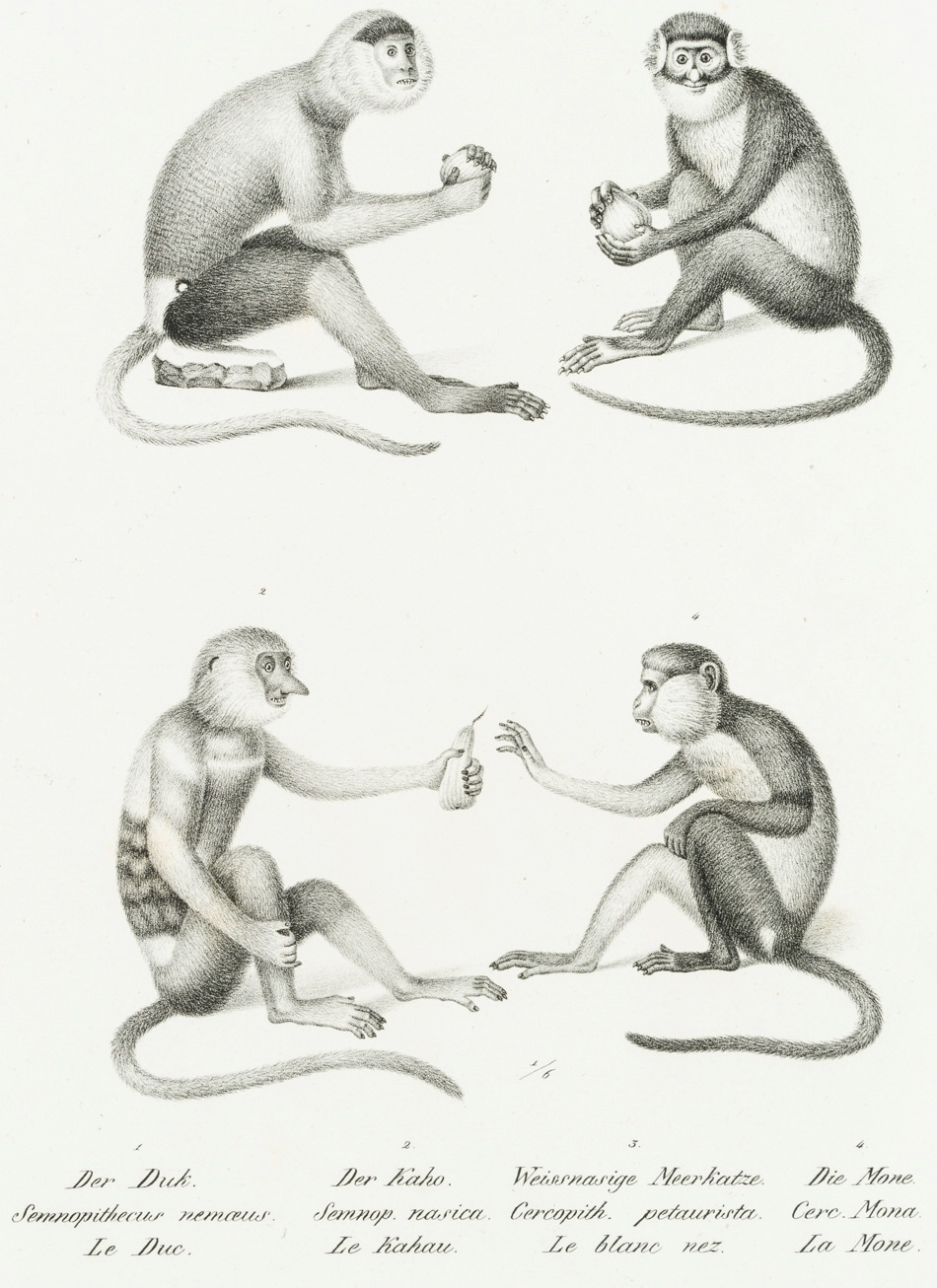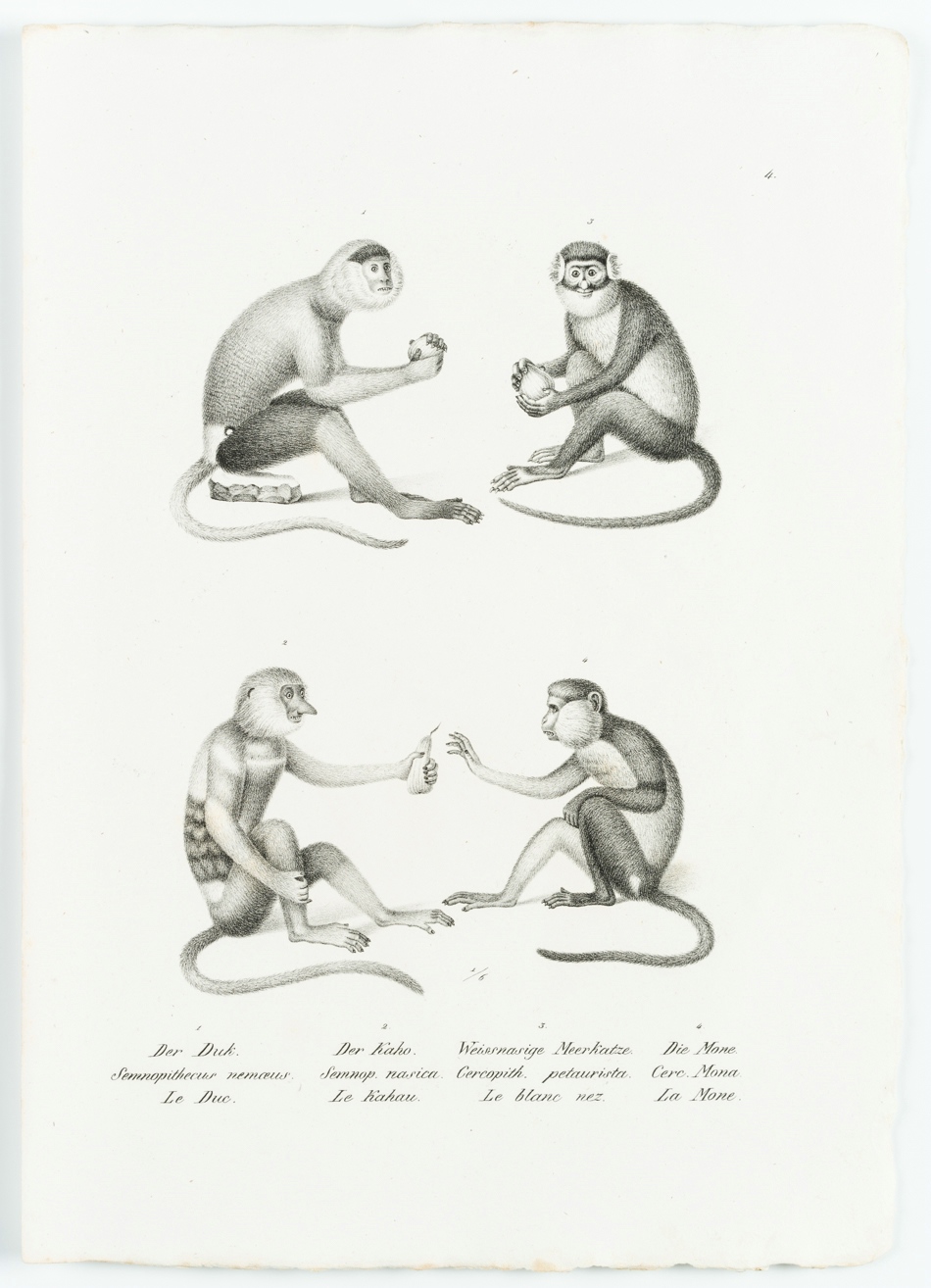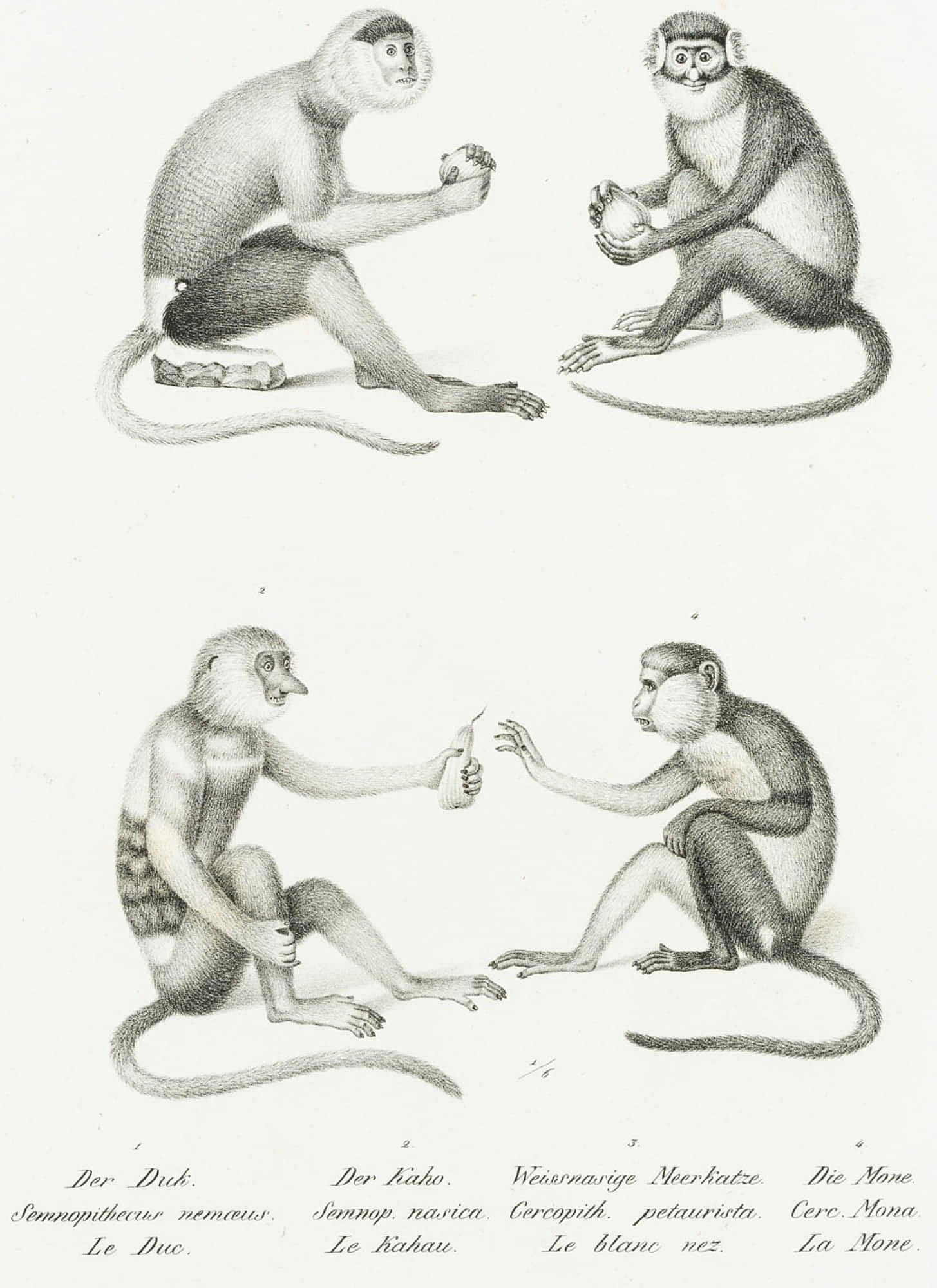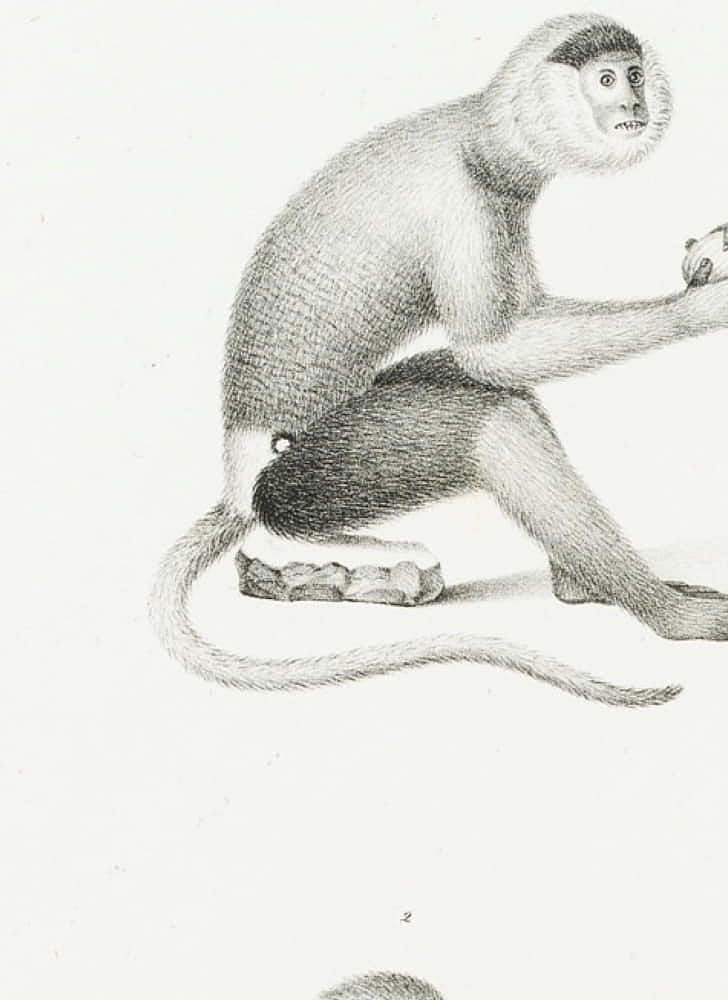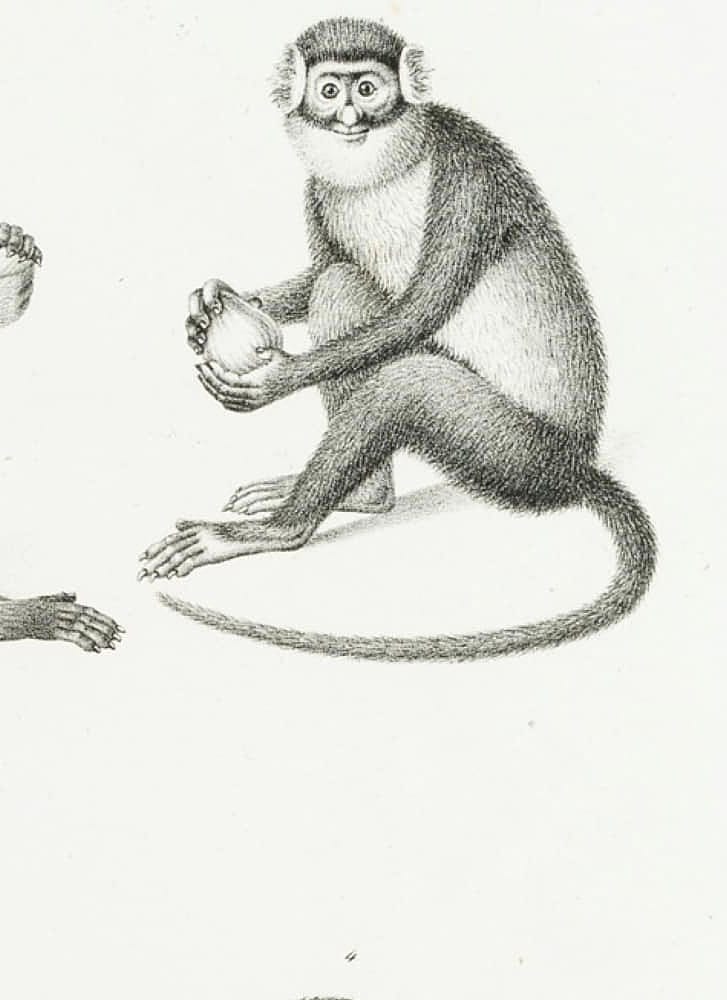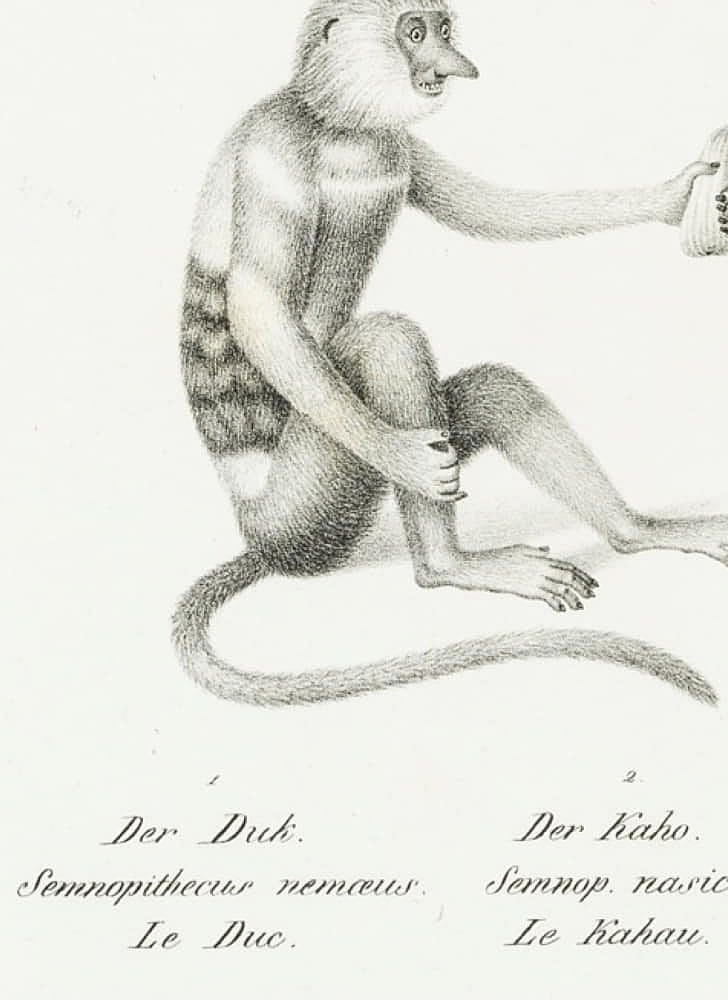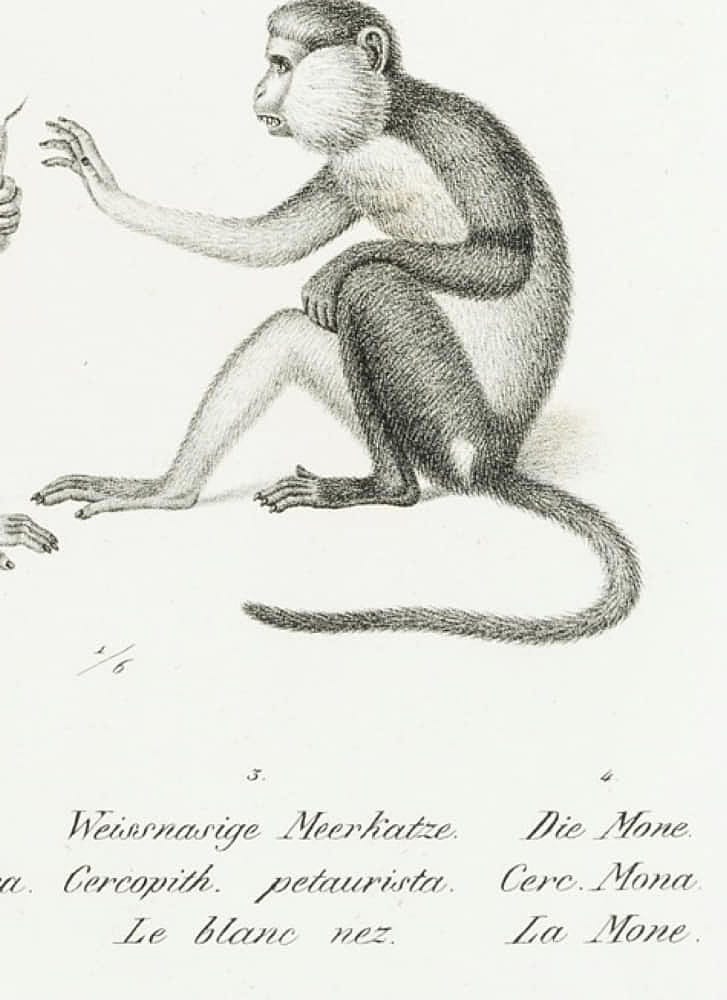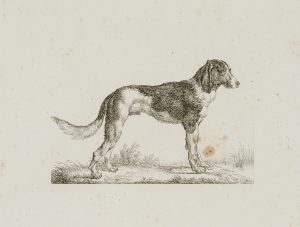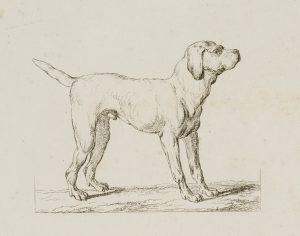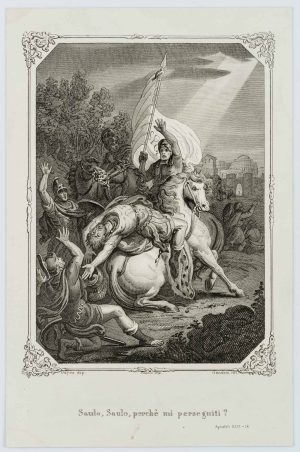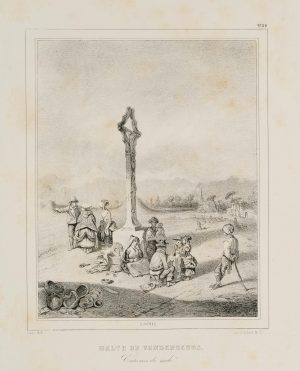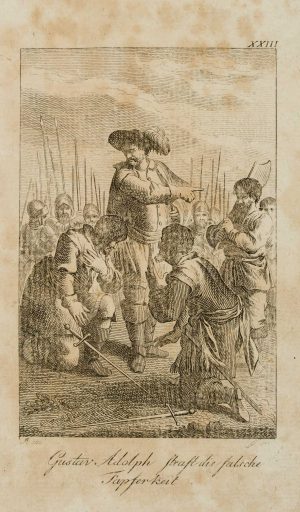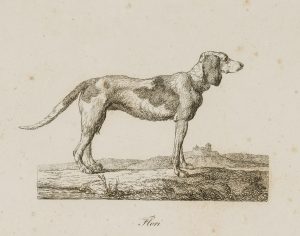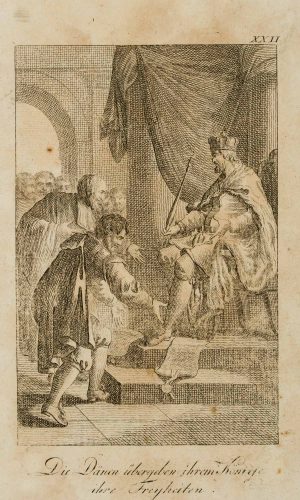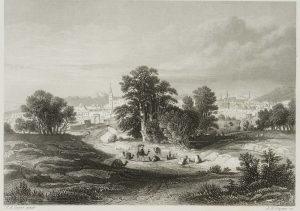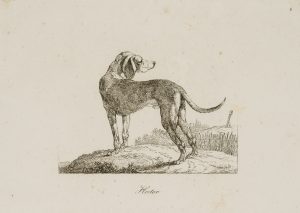Karl Joseph Brodtmann (1787 Überlingen – 1862 Basel), Meerkatzen und Meerkatzenverwandte, 19. Jahrhundert, Lithographie
- Technik: Lithographie auf Papier
- Bezeichnung: Unten betitelt: “Der Duk. Semnopithecus nemæus. Le Duc.” und “Der Kaho. Semnop. Nasica. Le Kahau.” und “Weissnasige Meerkatze. Cercopith. Petaurista. Le blanc nez.” und “Die Mone. Cerc. Mona. La Mone.”
- Datierung: 19. Jahrhundert
- Quelle: Karl Joseph Brodtmann (1787 Überlingen-1862 Basel) Naturgeschichte und Abbildungen der Säugethiere, Brodtmann’s lithographische Kunstanstalt, Zürich 1824-1829 | Buch, Wissenschaft, Tiere
- Schlagworte: Tiere, Deutschland, Affe, Romantik, 1800-1849
- Größe: 35,6 cm x 25,1 cm, Darstellung: 22,0 cm x 16,0 cm
- Zustand: Sehr guter Zustand. Vereinzelt sind minimale Stockflecken zu erkennen. Die Blattkanten sind unbeschnitten. Entlang der Kanten sind schwache Verschmutzungen und Knicke sichtbar. Am linken Blattrand befinden sich die Löcher der ehemaligen Buchbindung. Entlang der Kanten sind vereinzelte Stoßspuren festzustellen.
English Version:
Karl Joseph Brodtmann (1787 Überlingen – 1862 Basel), Long-tailed monkeys and long-tailed monkey relatives, 19th century, Lithography
- Technique: Lithography on Paper
- Inscription: Titled below: “The Duk. Semnopithecus nemæus. Le Duc.” and “The Kaho. Semnop. Nasica. Le Kahau.” and “White-nosed guenon. Cercopith. Petaurista. Le blanc nez.” and “The Mone. Cerc. Mona. La Mone.”
- Date: 19th century
- Source: Karl Joseph Brodtmann (1787 -1862 ) Naturgeschichte und Abbildungen der Säugethiere, Brodtmann’s lithographische Kunstanstalt, Zürich 1824-1829 | Book, Science, Animals
- Keywords: 19th century, Romanticism, Zoology, Germany, monkey
- Size: 35,6 cm x 25,1 cm (14 x 9,9 in), Depiction: 22,0 cm x 16,0 cm (8,7 x 6,3 in)
- Condition: Very good condition. Isolated minimal foxing can be seen. The edges of the sheets are untrimmed. Faint soiling and creases are visible along the edges. The holes of the former book binding are visible at the left margin. Isolated bump marks are visible along the edges.

